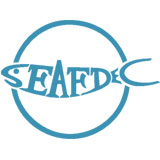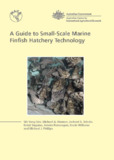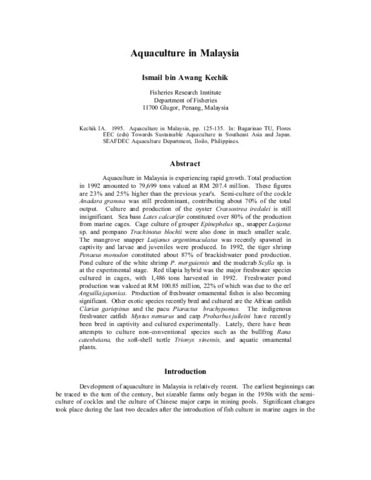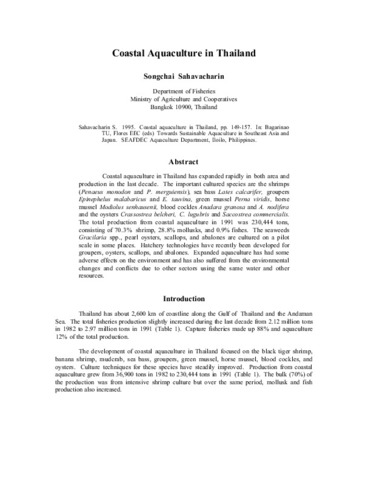An integrated semi-intensive shrimp and livestock system in the Philippines.
Share
Abstract
The development of shrimp (Penaeus monodon) production system integrated with livestock was undertaken at the Sycip Plantation Inc., Negros Orienta, Philippines, as a result of crop diversificstion efforts in the province. Heavy organic manuring of brackishwater shrimp ponds strongly simulated the production of lablab in the initial stages of pond preparation. Obsevations suggest that the problem of detriorating water quality in the last stage of culture due to prawn burrowing/feeding activities, was exacerbated by constant addition of anures. Plankton analysis of pond water indicated that this was a result of excessive nanno- and picoplankton blooms. A highly sinificant correlation (P < .001) between plankton (cell size < 5 microns) count and BOD was obtained. An alternative system using "kitchen ponds" stocked with artemia provided a suitable source of food for shrimp growth. Daily additionalof manure (100 kg dry weight/ha/day) produce an average 40 kg of ixed artemia and lablab protein each day during a three-month study period. Analysis of input:output ratios for the kitchen pond showed a net loss in organic matter and net gain in nitrogen yields during the conditioning period. Conditioned ponds had a net gain in both organic matter and nitrogen yields. An ares ratio of 1:5 for kitchen pond shrimp grow-out enable production at 700-1,000 kg/ha/crop at 30,000 pieces/ha stoking density, survival and grow-out period of 120 days. Significant reductions in feeding cost were obtained.
Subject
Taxonomic term
Collections
Related items
Showing items related by title, author, creator and subject.
-
A guide to small-scale marine finfish hatchery technology
Sim, Sih-Yang; Rimmer, Michael A.; Toledo, Joebert D.; Sugama, Ketut; Rumengan, Inneke; Williams, Kevin; Phillips, Michael J. (Network of Aquaculture Centres in Asia-Pacific, 2005)Recent improvements in hatchery production technology for high-value marine finfish species such as groupers have led to an increased interest in setting up hatcheries to produce fingerlings for aquaculture. Small-scale ... -
Aquaculture in Malaysia
Kechik, Ismail bin Awang. (Aquaculture Department, Southeast Asian Fisheries Development Center, 1995)Aquaculture in Malaysia is experiencing rapid growth. Total production in 1992 amounted to 79,699 tons valued at RM 207.4 million. These figures are 23% and 25% higher than the previous year's. Semi-culture of the cockle ... -
Coastal aquaculture in Thailand
Sahavacharin, Songchai (Aquaculture Department, Southeast Asian Fisheries Development Center, 1995)Coastal aquaculture in Thailand has expanded rapidly in both area and production in the last decade. The important cultured species are the shrimps (Penaeus monodon and P. merguiensis), sea bass Lates calcarifer, groupers ...






